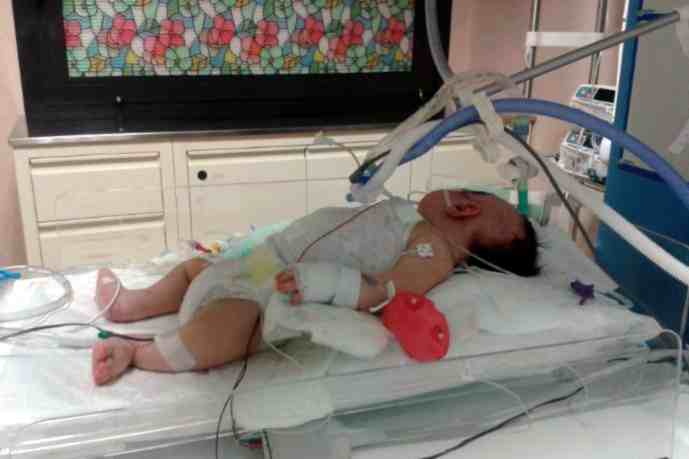
Brain monitoring of the newborn: what it is and why it is practised in neonatal intensive care units
Brain monitoring of the newborn: checking the activity, oxygenation and structure of the brain of infants admitted to neonatal intensive care units, who are at increased risk of neurological complications
The importance of newborn brain monitoring
Advances in neonatology over the last few decades have changed the life prospects of at-risk newborns, dramatically reducing their mortality.
The consequence of these successes is the selection of a population of newborns at risk of suffering from complications that are a direct consequence of the disease suffered in the neonatal period and the therapies carried out.
Among the most dreaded are neurological complications.
These are the reasons why we have introduced non-invasive brain monitoring for critical neonates in the neonatal intensive care unit, which evaluates both the continuous electrical activity with the method called ‘Integrated Amplitude Electroencephalography (aEEG) or Cerebral Function Monitoring (CFM)’, and the level of oxygenation in the brain using Near Infrared Spectroscopy (NIRS) together with a brain scan, which in newborns can be performed through the anterior fontanelle in the first few months of life.
In some cases it may be appropriate to carry out an MRI scan, which no longer requires deep anaesthesia and can also be performed in a specialised outpatient clinic.
CHILD HEALTH: LEARN MORE ABOUT MEDICHILD BY VISITING THE BOOTH AT EMERGENCY EXPO
How brain monitoring of the newborn is performed:
Integrated amplitude electroencephalography (aEEG) allows continuous recording of electrical brain activity with two or four electrodes on the scalp.
There are now numerous examples demonstrating its validity. Its use in the continuous monitoring of vital functions makes it possible to monitor brain function in patients who have an established neurological disease.
This technique is widely used to identify epileptic seizures and to assess response to therapy. The test is also useful for assessing the maturation of brain activity, for example in preterm infants.
The aEEG is a simplification of traditional electroencephalography and, unlike traditional electroencephalography, it has the advantage of allowing continuous monitoring, being easier to interpret and therefore can be evaluated by neonatal doctors and nurses.
Near-infrared spectroscopy (NIRS) is a non-invasive visualisation system of the brain that uses non-ionising light waves to record changes in the blood supply to the brain using optical sensors attached to the scalp.
It provides information on the state of oxygenation of the tissues and brain and thus gives indirect information on blood circulation.
NIRS can be considered as an “open window on the brain”, allowing us to identify at an early stage situations of blood circulation at risk and therefore to quickly start the appropriate therapy.
Brain ultrasound is a non-invasive diagnostic method that can be used at the patient’s bedside to visualise the structures of the brain and identify problems such as haemorrhages, dilations of the ventricular system, and changes in the cerebral white matter.
Ultrasound scanning is performed in all premature infants, in those with suspected brain disease, or whenever further neurological study is required.
Magnetic resonance imaging (MRI) is a more accurate investigation reserved for infants who require further investigation of neurological symptoms.
It allows a better evaluation of brain areas that are difficult to investigate with transfontanellar ultrasound.
It is used not only in malformative and infectious diseases, but especially in hypoxic-ischemic encephalopathy.
MRI is also useful in the evaluation of brain maturation (myelination) in the preterm infant.
Read Also:
Emergency Live Even More…Live: Download The New Free App Of Your Newspaper For IOS And Android
Paediatrics / Recurrent Fever: Let’s Talk About Autoinflammatory Diseases
Paediatrics, Diabetic Ketoacidosis: A Recent PECARN Study Sheds New Light On The Condition
SCCM Releases PANDEM Guidelines For Critically Ill Children And Infants


